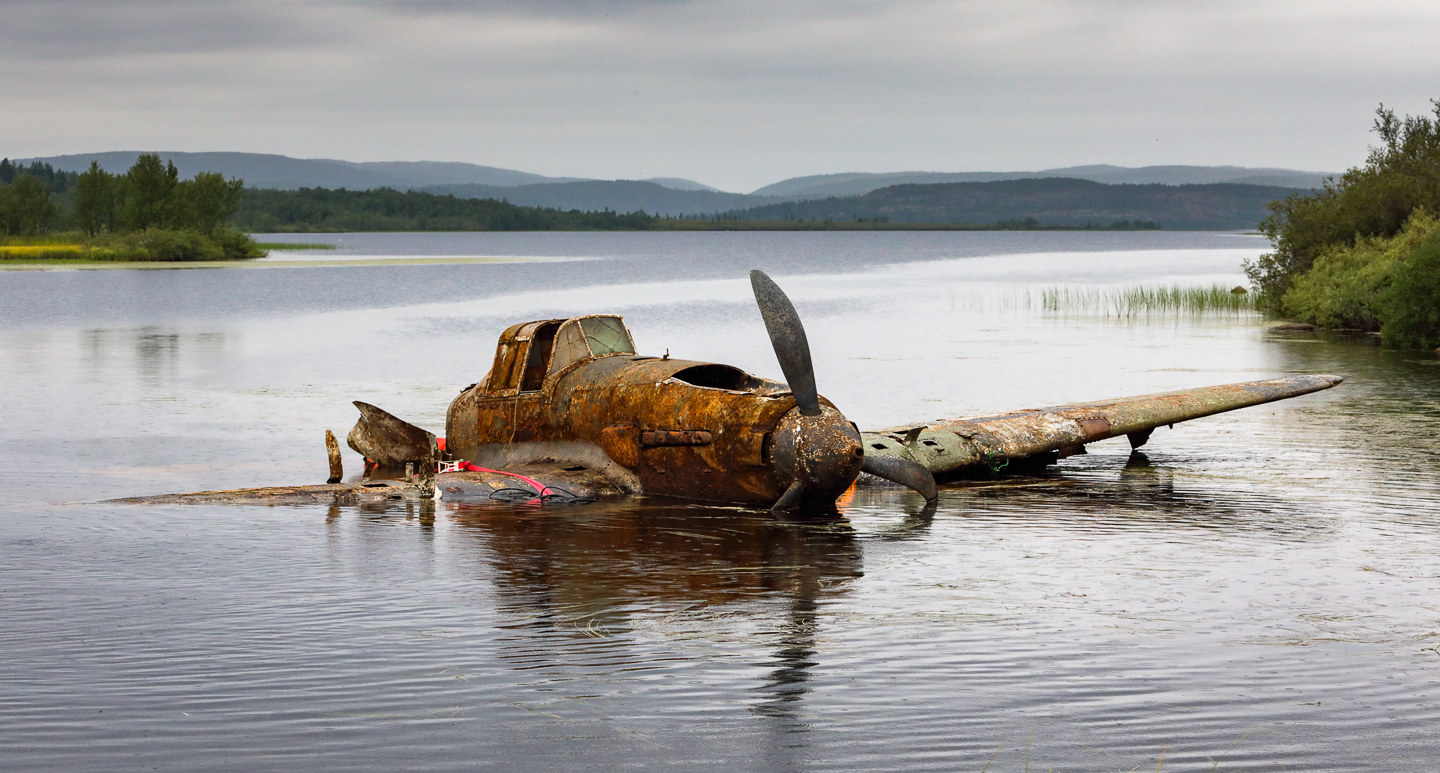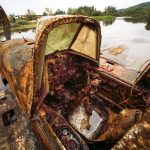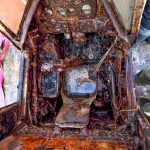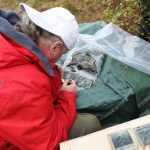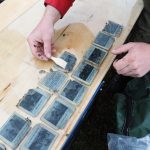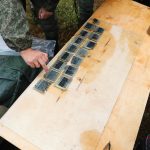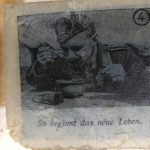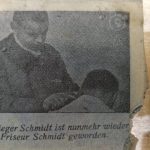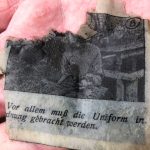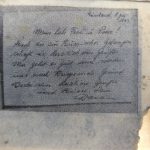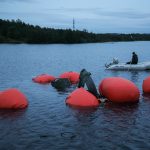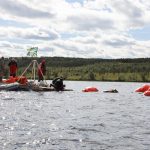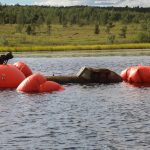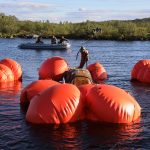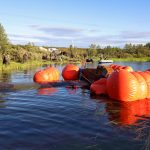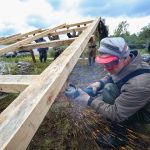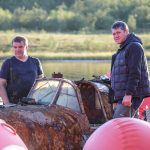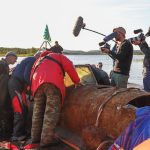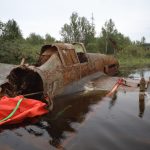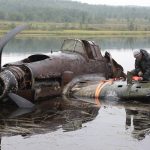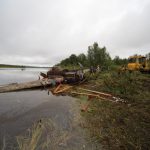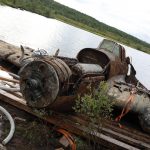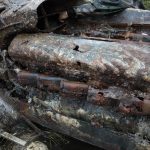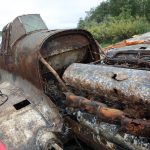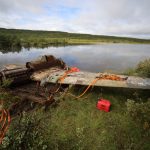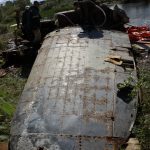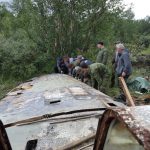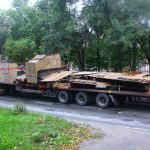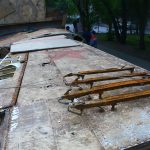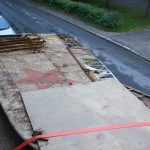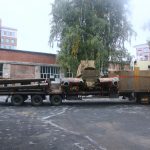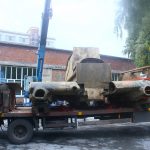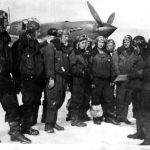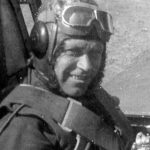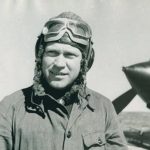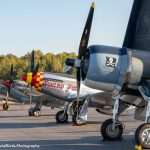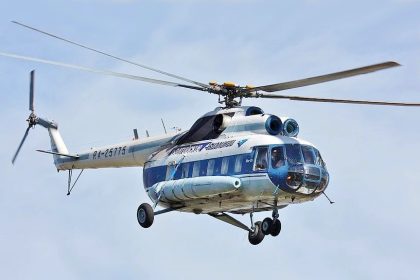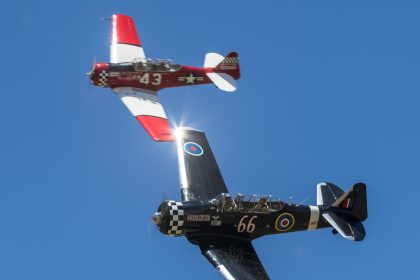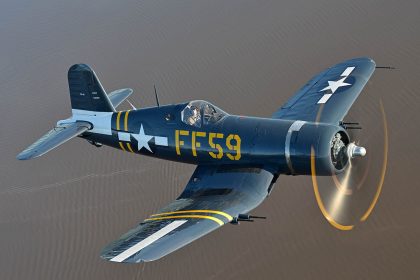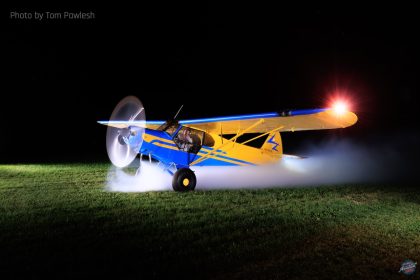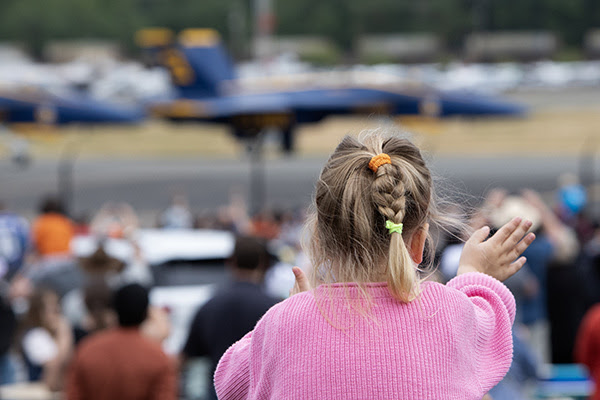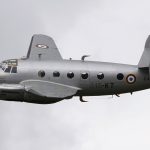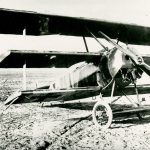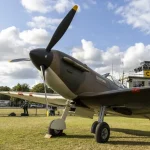Back in August, we published a brief story covering the recent recovery of a remarkably intact Ilyushin Il-2 Shturmovik from a lake in present-day Russia. While we reported on the details as we knew them then, we have recently received a fabulously detailed article written by Mark Sheppard which goes into greater depth on both the recovery and the battle in which the aircraft went down. We thought our readers would enjoy reading this account, not to mention seeing a number of new images which have since come to light.
Arctic Lake Recovery of an Ilyushin Il-2 Shturmovik
by Mark Sheppard
The Il-2 has the record of being the most widely-built aircraft ever produced; 36,136 were built between the beginning of June 1941, when large scale production was implemented and until production of the standard Il-2 ceased in October 1945 and the Il-2U trainer at the end of 1946. With such phenomenal numbers; 2,300 being built in each of the eight months of 1944, it is staggering that there are only a dozen complete examples within museums today (although a number of airframes have been recovered over the last 20 years).
It is even harder to comprehend that the British answer to the need for a low level daytime bomber, the Fairey Battle, and the Russian answer for ground attack aircraft, the Il-2, were both designed under similar specifications. It has been reported that the Il-2 suffered one of the lowest losses in the VVS (Army Air Force) but this is not true. Losses were significant, but no other aircraft inflicted such damage on the enemy; Axis losses of all categories (tanks, cars, men, aircraft, ships, fortifications, ad nauseum) to the Shturmovik were astounding, so it was a significant weapon for Russia turning the tide of the war in their favour and their ultimate victory.
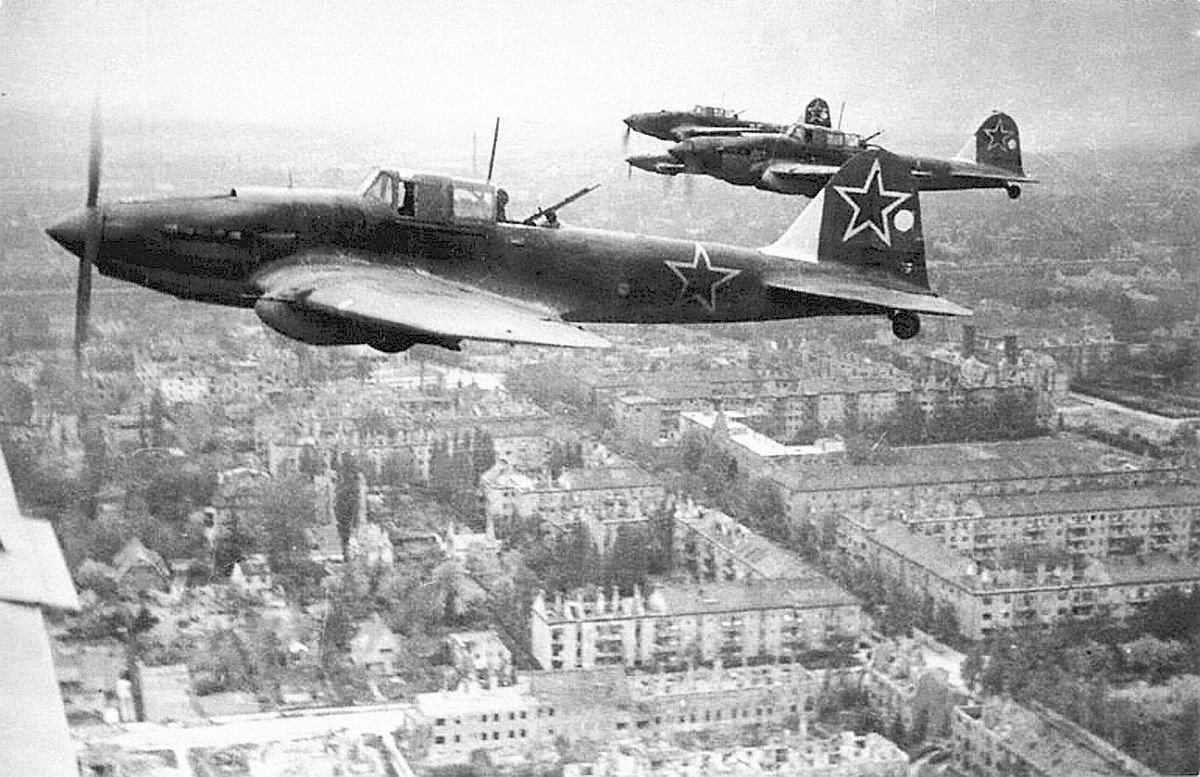
Armor: the gunner had a 13mm steel protective plate, with the pilot’s backplate being of similar strength. The canopy side panels were 8mm and the front windscreen was 55mm thick. The engine cowling had 6mm steel armor, as did the cockpit side panels. This was enough to protect it against machine gun fire; so in order to bring the aircraft down, you had to have either an exceptional shot at the cockpit or use cannon instead of machine guns. This is probably one of the reasons 20mm or 30mm cannons became a standard weapon on later Luftwaffe aircraft models
Originally the Shturmovik prototype was designed as a two seater but retention of the gunner hinged on the debate between performance versus utility; was it more effective to have higher speed/climb or better defense? Initial models were completed as single seaters, though following significant loses and the conclusion that most operations were at low level, it was decided the rear defense was necessary, so the rear gunners position was re-introduced.
Recovery
During the course of researching the recovery of Skopintsev’s Shturmovik (recovered in 2005), the loss of a rarer single seater became known and marked for future investigation/recovery.
Two research teams were involved in the expedition; FROM and IKAR. The search commenced in 2013 and in the original loss report, the pilot had listed Lake Arno as the location where he force landed. Lake Arno is a very large lake and up to 60m deep. After a number of expeditions it was clear the Shturmovik was not there.
After this failure, the team began searching adjacent lakes, and in 2017 they were lucky enough to find the Shturmovik in Lake Krivoe following a sonar scan. Lake Krivoe is to the east of Murmansk and only 8-10km from Veanga-2 airfield from where the Il-2 left on its last mission nearly 75 years earlier.
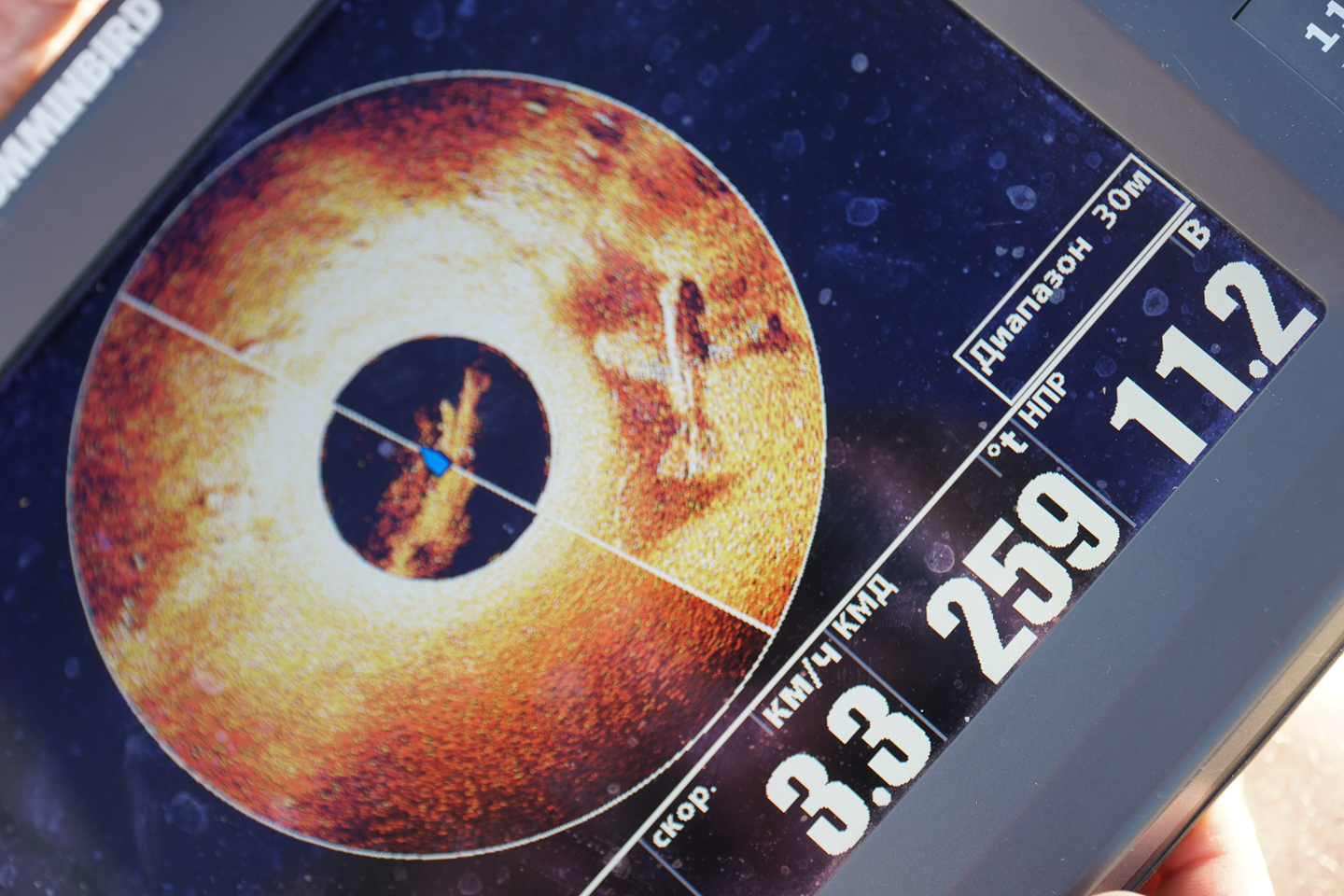
The Shturmovik was at a depth of 11m (36ft) within a 200m (650ft) diameter depression within a lake 1.85 miles (3km) long and half a mile (800m) at its widest point. The majority of the lake is not much deeper than a couple of meters and at the southern end is littered with large boulders. Had this Shturmovik landed anywhere else, she would not have survived in a complete condition due to the geology and winter ice thicknesses.
The Shturmovik was videoed under water which revealed that the airframe was complete, however, the closed canopy caused some concern. Following closer inspection, the cockpit was found to be empty; it is assumed that the canopy closed during the aircraft’s decent to the lake bed following the wartime crash. The rear timber fuselage had rotted and collapsed due to 75 years of submersion although the aluminum tailplane and rudder remained where you would expect them to be located.
The recovery commenced on August 9th, 2018. The aerial, tailplane, tailwheel and rudder were the first items to be recovered; the Soviet red star still being visible on the tattered rudder fabric. The aircraft’s center section and wings were lifted with traditional inflation bags and pulled towards shore. Usually in such recoveries, you have some part of the lake which is deep enough to bring the aircraft right up to the shore and lift it out, but the shallow, boulder-strewn shoreline proved a challenge on this one. In the end, the team decided to construct a timber frame to act as a skid onto which the airframe was pulled with the added protection of old tires. The aircraft on top of its timber recovery frame was then pulled ashore, whereupon its disassembly could begin.
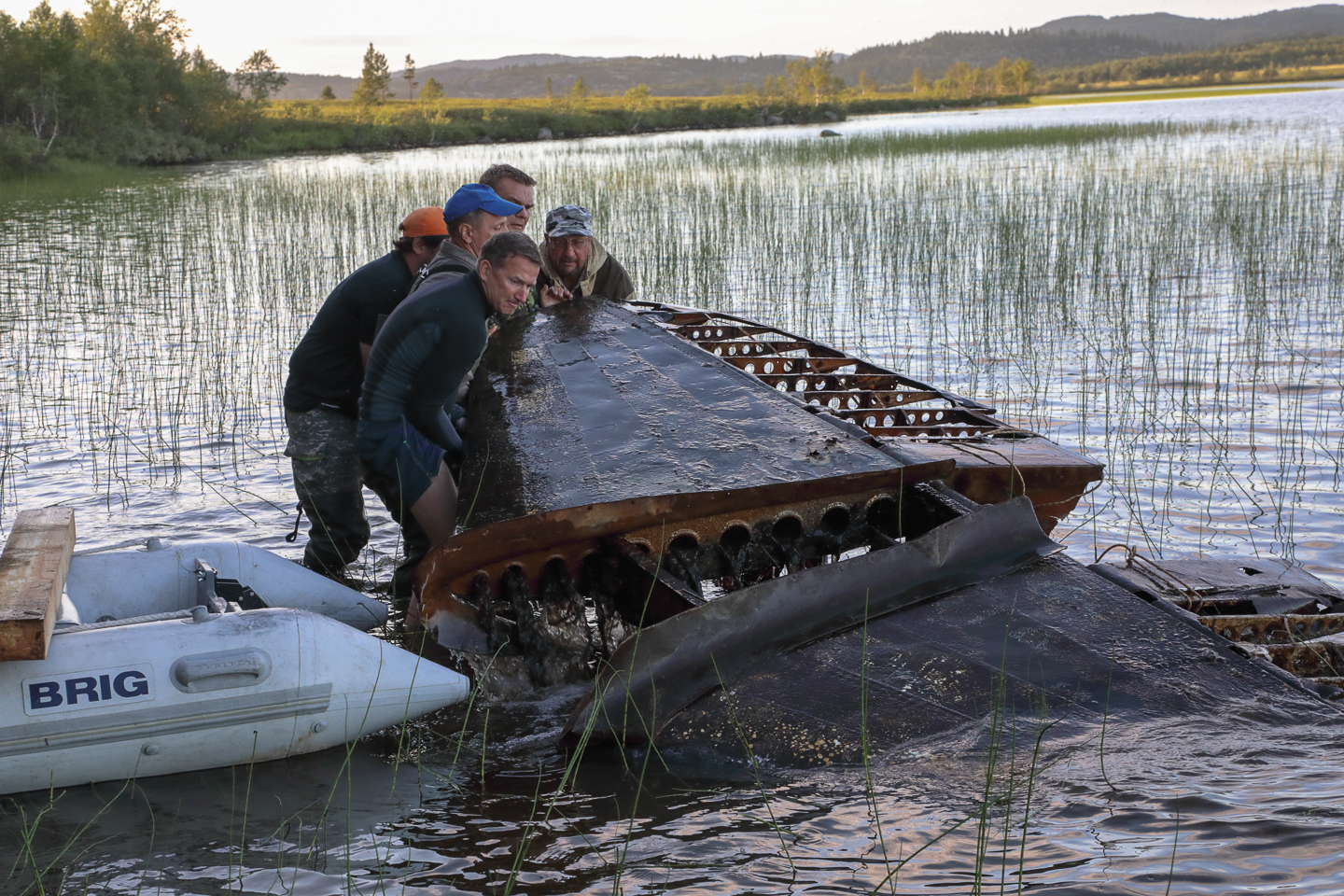
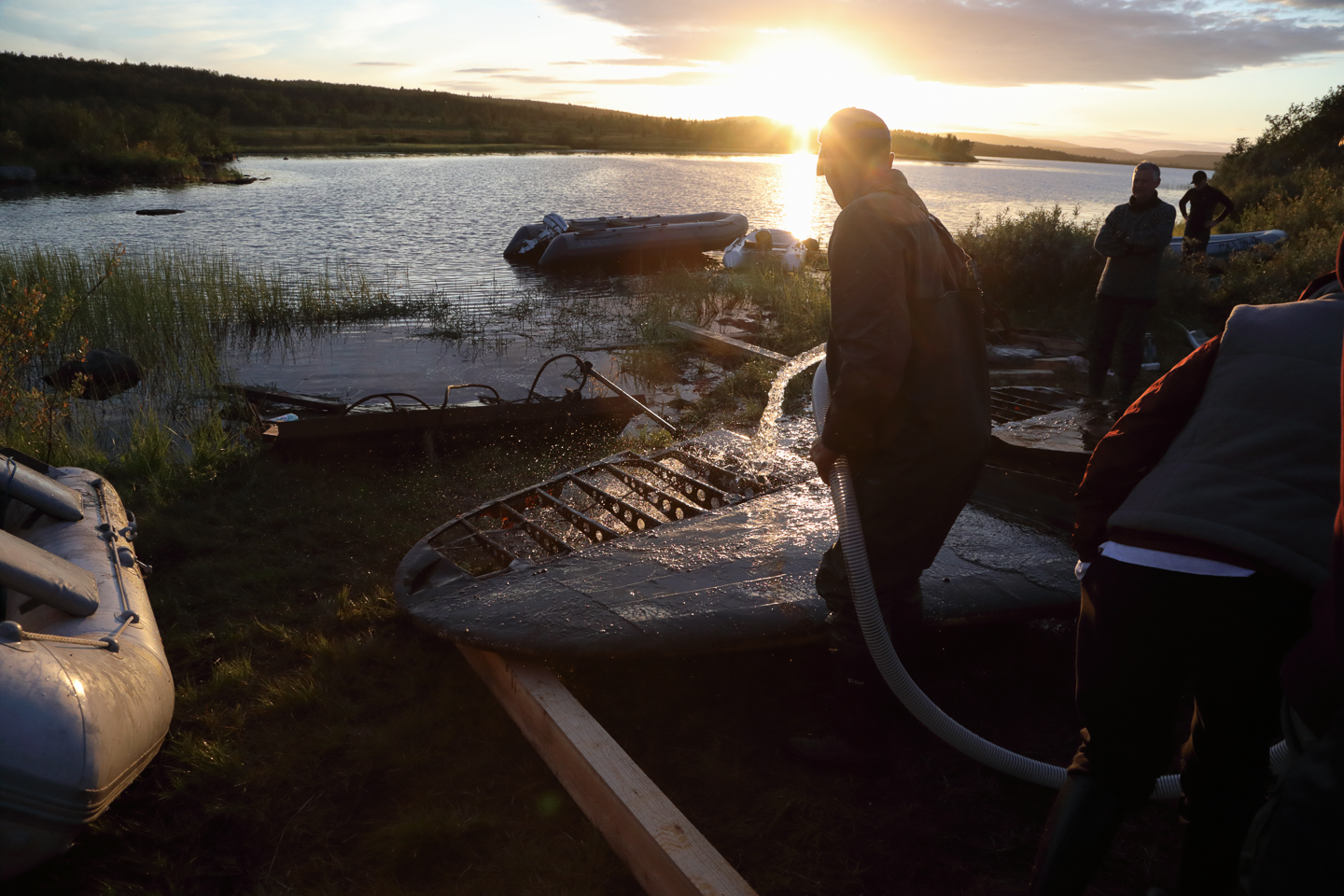
Once ashore, the airframe was checked over. The Il-2’s serial number was clearly stenciled on the undercarriage pivot point shroud as well as the wing itself by the aileron. The wing and tailplane camouflage was still visible. With the removal and turning over of the port wing, the lower red star insignia was also clear along with four rocket rails.
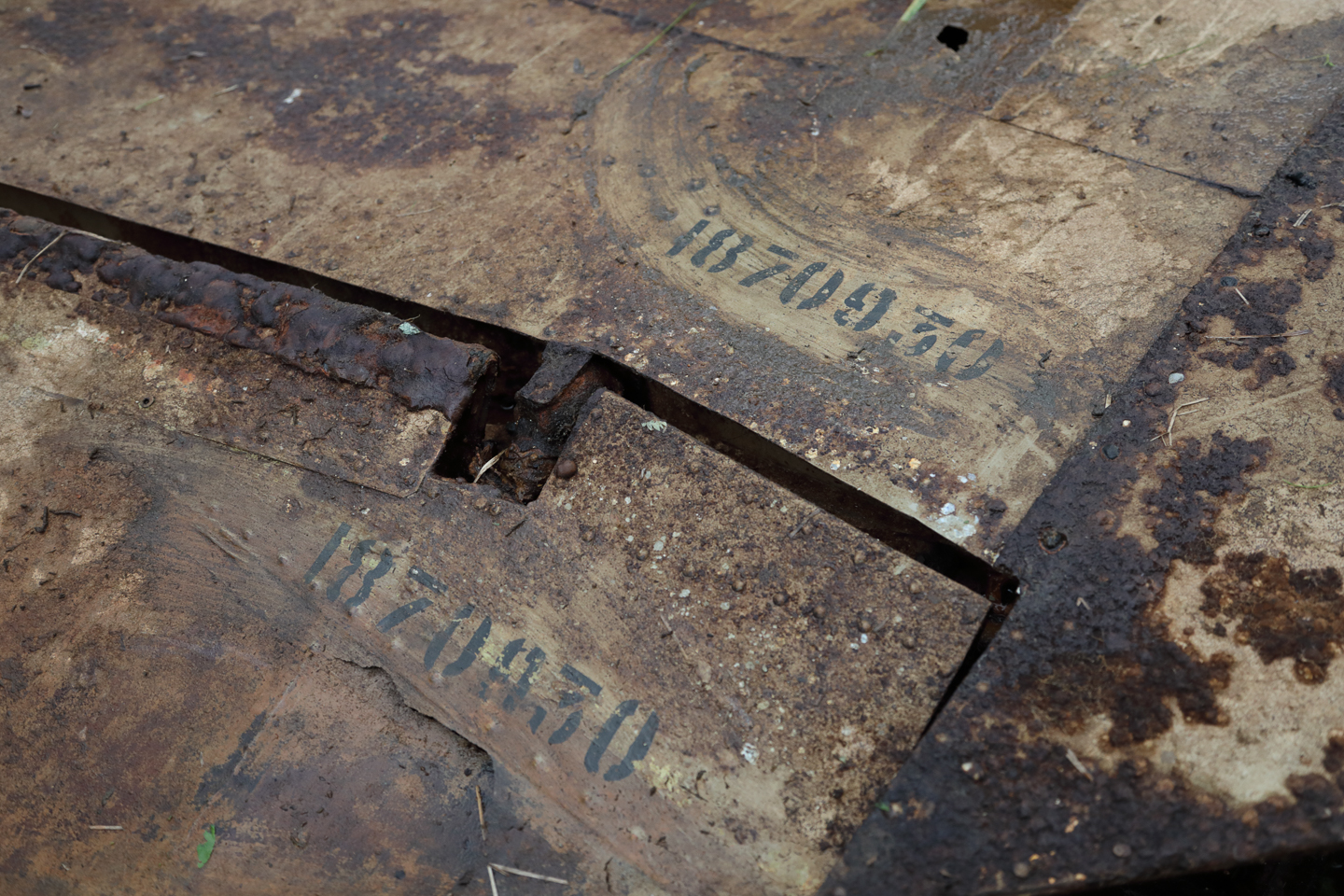
Also located was a gun camera. Sodden, undistributed propaganda flyers as well as maps were present in the cockpit, and remarkably well preserved, all things considered. The engine covers, propellor and hub were then all removed before the Mikulin engine was lifted out. Finally the starboard wing was removed and all elements were loaded onto a metal sledge and pulled away by a bulldozer to the nearest road for loading and onward transportation to Novosibirsk.
Clearly visible on the airframe was evidence of 20mm cannon damage to the tailplane/stabilizer and beside the port wing undercarriage pivot point. However, what probably brought the aircraft down was the cannon shell which went through the armored engine cowling on the starboard side to penetrate the valve cover and camshaft. However, even with this damage, the Shturmovik was still able to fly 70km away from the battle back to friendly territory before finally force landing on the lake.
The Shturmovik has now been transferred to Aviarestoration facility at Novosibirsk, Siberia to be restored to flying condition. The recovery was financed by Boris Osetinsky (who has been recovering warbirds for over 25 years) and the Wings of Victory Fund.
On completion, an example of each main type of Shturmovik will be airworthy: This single seater, the straight winged two seater with Vadim Zadorozhny in Moscow and the swept wing ‘arrow’ with the FHCAM in Seattle.
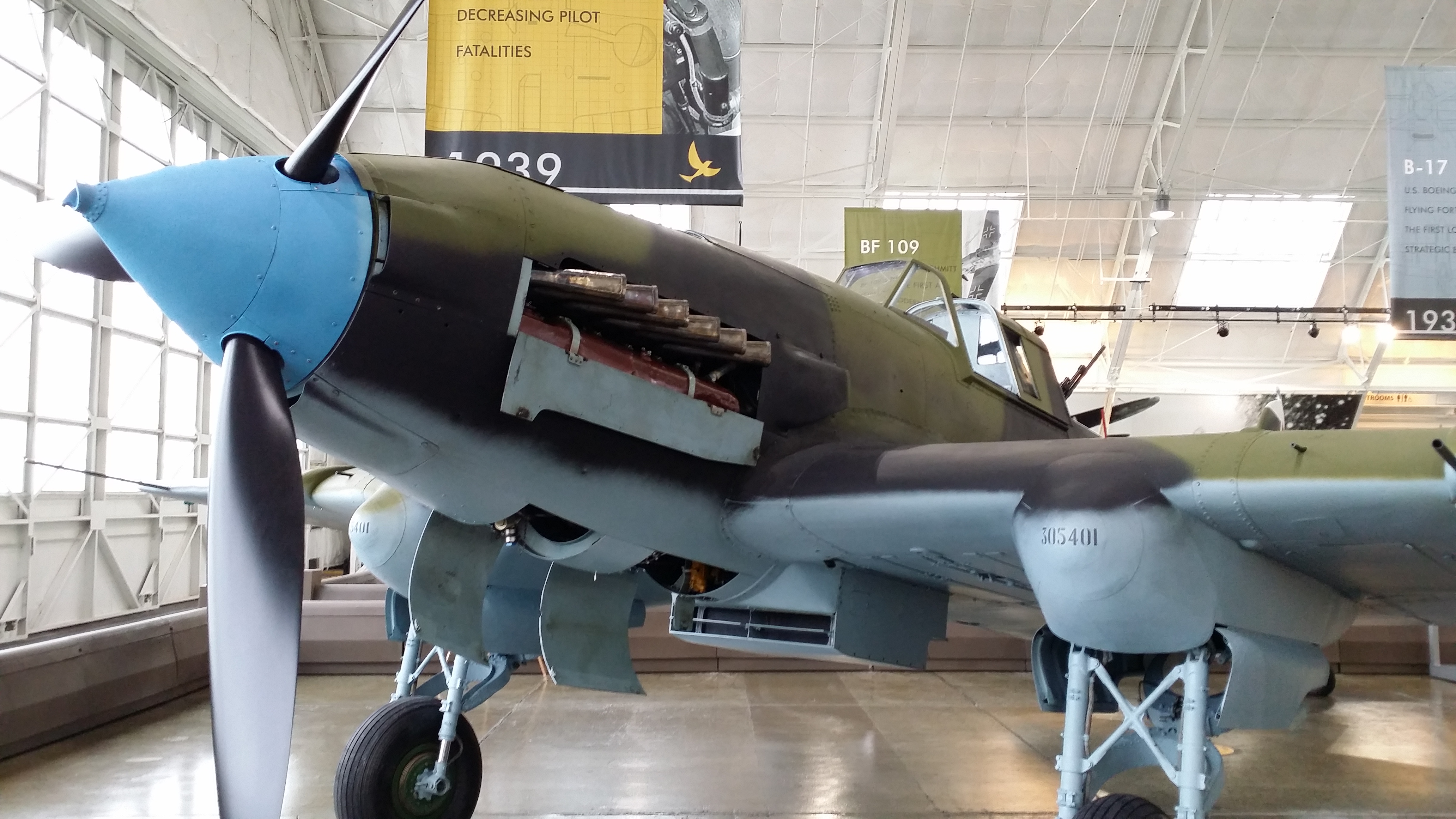
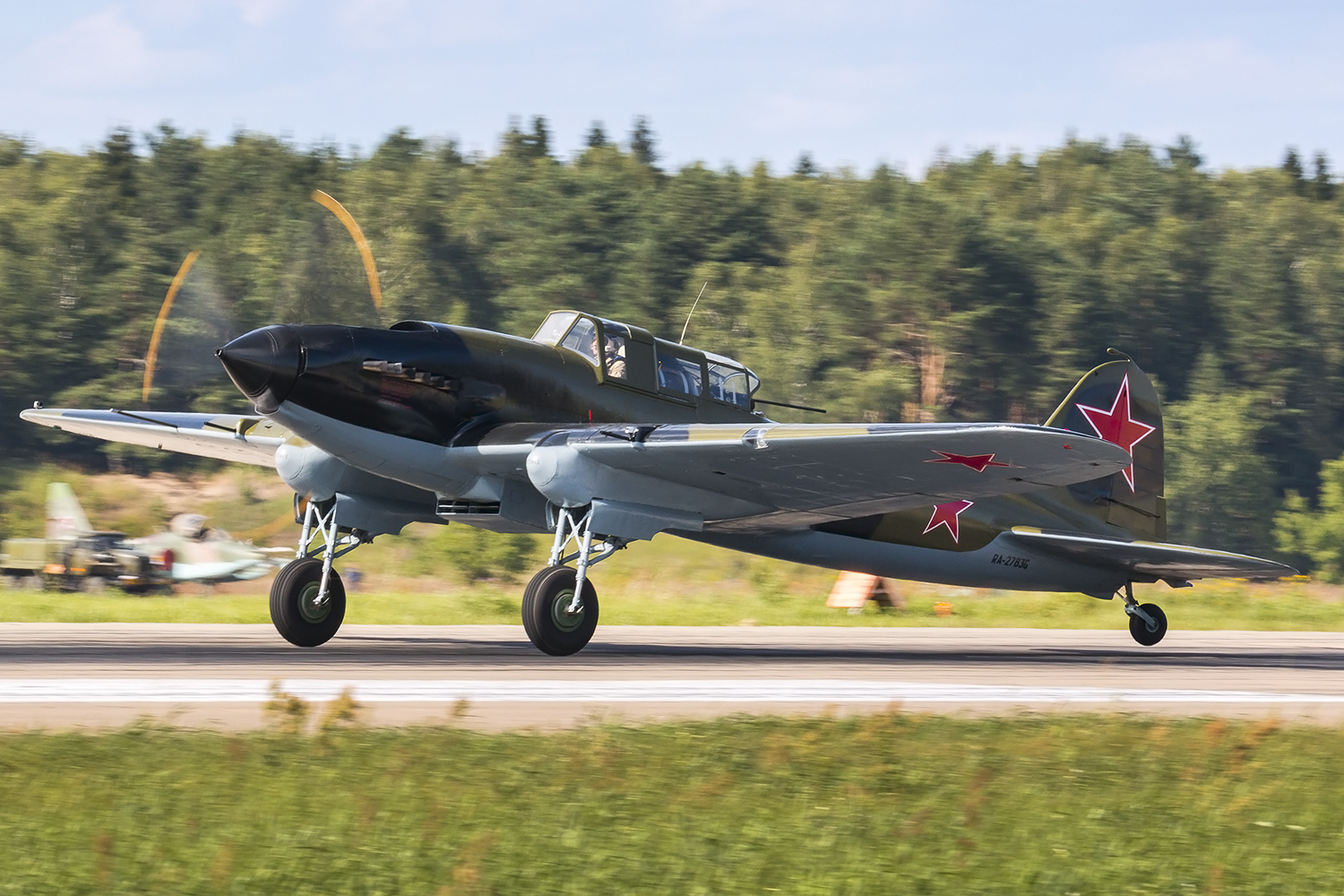
Ilyushin Il-2 ‘Shturmovik’ No.1870930
In June of 1942, Shturmovik 1870930 was completed at Zavod 18 (State Aircraft Factory 18) at Kuibyshev (now Samara) and was part of a small batch (thought to be around 3,300 examples!) of Il-2s that had the original straight wing with 5% sweep. All of Zavod 18’s Shturmovik were completed with the outer wing sections manufactured in duralumin.
The rear fuselage and fin were constructed in two halves of high quality Finnish veneer manufactured from Siberian pine. Cross-layered and glued with an epoxy resin, the two halves were then plugged and glued to the fuselage ribs. The final stage was to cover the shell in fabric, which was then doped and painted.
The aircraft’s construction number, 1870930, can be broken down as 18 (factory), 7 (model), 09 (aircraft number) and 30 (series number). Therefore this Il-2 was constructed at factory 18, model 7 (attack Il-2) and the 9th aircraft of the 30th series. It seems therefore to be in the same block as the two seater (1872452) recovered in 2005 and now flying in Russia; albeit 22 series before. Assuming there were 75 aircraft in each series, there would have been approximately 1,650 aircraft between them.
Shturmovik 1870930 had a standard armament configuration, with a Shpital’ny Komaritsky ShKAS 7.62mm machine gun in the wing root alongside a Volkov-Yartsev VYa 23mm cannon; one per wing. The internal and external weapon stores were a combination of 400kg of bombs, eight RS-82 rockets or four RS-132 rockets. This example was also fitted with a VV-1 external aiming device rather than the internal PBP-1 sight which had proved unsatisfactory.
This example was fitted with the standard Mikulin AM-38 V12 engine producing 1700hp and this engine was most likely built at Zavod 24 at Kuybyshev.
Camouflage was still black/green but in the newer colors of AMT-4 Green, AMT-6 black and AMT-7 light blue. The red stars located on the fuselage, fin/rudder and lower wing surfaces had a thin white outline (nearly invisible due to submersion and discoloration) and this is consistent with airframes leaving Zavod 18 in 1942.
It is unclear where 1870930 first operated, as there seems to be at least a six month period between manufacture and their transfer to the Arctic North.
This Shturmovik was issued to the 46th Shtourmovoi Aviatsionny Polk (46th ShAP Shturmovik Assault Regiment) who were the only Soviet Navy unit to operate the Shturmovik in the Arctic North. 46th ShAP was formed as a night bomber unit in the Black Sea area in 1942 flying the UTI-16 before being re-equipped and transferred to the north in the spring of 1943.
Currently little is known of the service of 1870930 or the tactical number. As she was flown by the squadron leader of the 3rd Squadron and the first allocated number was 21, it has ben decided to mark her up as ‘Red 21’.
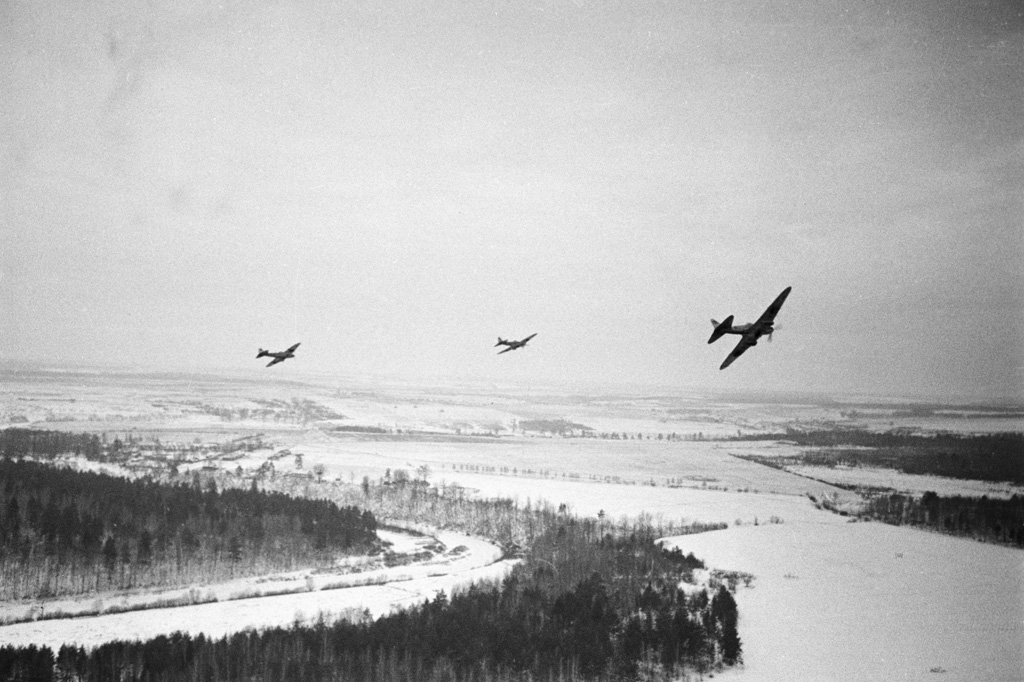
22nd August Mission and loss – Soviet Records.
More is known about her final loss through compiling information from both German and Russian wartime records which have been sourced.
In the third week of August 1943 the Soviet Naval units in the Arctic Circle began preparation for a major attack on Luftwaffe airfields in Finland.
Planning began on August 20th when the Chief of Air Staff decided to attack German-held airfield at Loustari (Note: Loustari was the Finnish name for the location, although the Germans referred to it as Petsamo. The Russians now call it Pechenga, as the Soviets annexed this area of Finland at the end of WWII). Luftwaffe aircraft based at Loustari were able to attack the front line, to attack Soviet shipping in the Gulf of Motov and in turn protect German shipping to Haranguer Fjord. Aircraft from the Soviet 818th RAP (Reconnaissance Air Regiment) flew over Loustari at lunchtime and confirmed that there were twenty Fw 190s, nineteen Bf 109s, one He 111 and one Fi 156 at the airfield.
The original plan was to attack Loustari in three waves, consisting of 52 aircraft, which included an attacking force of 20 aircraft (Il-2s and Pe-2s). With other secondary airfield strikes, the plan was to have 79 aircraft in the air which would require a maximum effort by each squadron and the round crews getting them prepared. 46th ShAP were based at Veanga-2, only 105km (65 miles) in a straight flight to Loustari.
At 14.30 MT (Moscow Time) on 20 August, the squadron and flight leaders of 46th ShAP attended a briefing at the headquarters of SF VVS (The Air Force of the Northern Fleet). Commander Mikhailov ordered the squadron leaders to have fifteen Il-2’s available for the attack – four from 1./46th ShAP, six from 2./46th ShAP and five from 3./46th ShAP.
The mission was postponed a number of times due to dense and drifting fog as well as a low cloud base. Finally the weather broke and the mission was penned for August 22nd with the following forces.
Group One – Depart 04.18 MT (Moscow Time) – Attack 04.40 MT
Six Il-2 Shturmoviks of 1./46th ShAP escorted by six Hurricanes of 78th IAP and six Yak-1Bs of 20th AP flying at 150m – 200m on a course taking them from Veanga 2 / Lake Koshkayavr / Loustari.
Group Two – Depart 04.20 MT (Moscow Time) – Attack 04.47 MT.
Eight Il-2 Shturmoviks of 3./46th ShAP escorted by eight Hurricanes of 27th IAP and six Yak-1Bs of 20th IAP flying at 100m – 1200m on a course taking them from Veanga 2/Ura Guba/Guba Eyna/Guba Tito/Loustari.
A further covering unit of six P-39s of 255th IAP and six Yak-1B’s of 20th IAP were allocated to provide additional top cover protection to both groups.
Unfortunately the first group of Il-2s flew too far to the south-west of the target and were attacked by seven Fw190s and Bf109s about 10-12km from the airfield. The escorting Yak-1Bs and Hurricanes tried to protect the Il-2s that German fighters were attacking, either singly or in pairs, and began to inflict damage to the attacking force. However, the Il-2s were forced to jettison their bomb loads and head for home. The top cover were located too far from this group and therefore could not observe the battle.
Group One lost two Hurricanes with one pilot killed. They claimed six German fighters, one by an Il-2 gunner, and the other five from the fighter escort! Whilst this unit was under attack, Group Two had reached their target.
At a height of 1000m, the second group attacked from the North East. The Il-2’s fired twenty RS-82 (82mm) and seventeen ROFS-132 (132mm) rockets at the dispersed aircraft at the South Eastern and Western edges of the airfield. Exiting their dives at 400m, the Il-2s dropped thirty-two FAB-100 (100kg) bombs. The escorting Hurricanes also dropped FAB-50 (50kg) and AO-25 (25kg) bombs. As a result, the attacking force claimed ten burning aircraft, six to eight large fires and damage to anti-aircraft batteries including an 88mm cannon. As the group was straffing the airfield, six Luftwaffe fighters appeared from the North West. The escorts managed to keep the Fw 190s and Bf 109s away from the Il-2s, two of which had suffered flak damage during the attack.
Group Two lost one Hurricane force landed and burnt out and one Yak-1B with the pilot killed. They claimed five German fighters, one from an Il-2 gunner, the other four from the fighter escort.
The two Shturmovik’s damaged by flak were those of 46th/ShAP Group Leader Mikhailov and 3./46th ShAP Squadron Leader Kalichev. They managed to fly their damaged aircraft to friendly lines where Mikhailov splashed down in a swamp which he and his gunner survived, although searches for the two men later led to further loses. Kalichev landed right in the middle of the lake. After 30 minutes in the lake, an LAS-1 rubber boat picked up the stranded pilot, and he survived.
Overall, the Soviet Air Force on this day claimed 27 aircraft destroyed, 17 of them in aerial combat. The actual Luftwaffe quartermasters returns lists two (at least anything over 10% damaged).
The Luftwaffe records generally tie in:
22-08-43 around Petsamo Airfield – Attack of 60 aircraft – Boston, Il-2, Aircobra, Tomahawk, Hurricane. Attack at 03.50 (European Time) by 30 aircraft in several waves combining high and low level attacks. Fighter aircraft took off and claimed seven attackers and flak claimed two. It has not yet been possible to identify any individual claims from II/JG5 in the Bf109’s or 14./(Jabo)JG5 pilots in the Fw190’s. We do know the two listed Luftwaffe loss/damage listings though.
Bf109G-2 W.Nr10844 of II/JG5, air combat with Soviet fighters. 100% Pilot Fw Hans Enderle wounded. Crashed SW of Petsamo.
Bf109G-2 W.Nr13941 of II/JG5, flying accident/technical 20% damaged. Petsamo.
Il-2 pilot.
On the 22 August 1943, Iluyshin Il-2 Shturmovik, 1870930 was being flown by 34 year old Captain Alexander Ivanovich Kalichev who was the squadron leader of the 3./46thShAP.
From the armament list it is thought this Shturmovik was armed with four FAB-100 bombs in the internal wing bomb bays and two ROFS-132’s and two RS-82 rockets on the wings.
Kalachev had been with 46th ShAP since its formation, leading the 1st squadron between May 1942 and January 1943 (as part of the Black Sea Fleet). On being reequipped with the Shturmovik, Kalichev moved to the 3rd squadron in January 1943 and led this unit until his force landing. A few weeks after Kalichev posted to another unit. He survived the war and was awarded numerous awards during the GPW. Having qualified as a pilot in 1933 he retired as a Lieutenant Colonel in 1955 and is thought to have passed away in 1985.
It is hoped that the restoration of Shturmovik 1870930 will be the finest and most historically correct restoration, even if fitted with an Allison V12 which now seems to be the norm).
The author wishes to thank Boris Osetinsky, IKAR recovery Group and Rune Rautio for all their help in compiling this article as well as Juanita Franzi for the profile. ©2018 Mark Sheppard
We would also like to express our profound thanks to Mark Sheppard for allowing us to publish this fascinating article!







